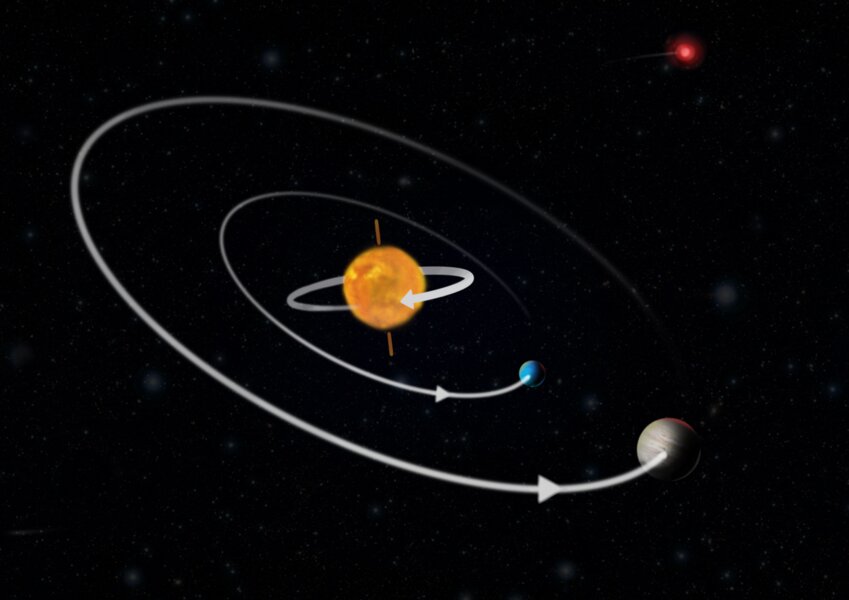It’s just like a normal solar system…except completely backwards.
When solar systems form, both the parent star and any planets come from the same molecular cloud. As the cloud collapses, it spins up from conservation of angular momentum, just like a figure skater pulling in their arms. The cloud maintains that spin as it flattens into a protoplanetary disk, and so the spin of the central star lines up with the direction of the orbits of its planets.
Simple, right?
But apparently the K2-290 system, discovered by Maria Hjorth and Simon Albrecht from the Stellar Astrophysics Centre at Aarhus University, wasn’t paying attention in its Astro101 class. This system features two planets, both orbiting in the same direction, but those orbits are almost completely in the opposite direction of their star.
“We found a very intriguing planetary system,” said Hjorth, “There are two planets that orbit around the star in nearly the opposite direction as the star rotates around its own axis. This is unlike our own solar system, where all the planets are revolving in the same direction as the sun’s rotation.”
Astronomers have spotted such “backwards” systems before, but this time it involves two planets, plus another distant orbiting star.
That star holds the key to explaining what went wrong with K2-290. When the system was first forming, the distant star might have tugged on the early protoplanetary disk, causing it to tilt so much that it completely flipped over.
According to study coauthor Rebekah Dawson of Pennsylvania State University, “In any planetary system, the planets are thought to form in a spinning, circular disk of material that swirls around a young star for a few million years after the star itself is born, the so-called protoplanetary disk. Usually, the disk and the star are spinning the same way. However, if there is a neighboring star (where ‘neighboring’ in astronomy means within a light-year or so), the gravitational force from the neighboring star might tilt the disk.”
What does this mean for the future exoplanet hunting? Simon Albrecht from the Stellar Astrophysics Centre, Aarhus summed it up best: “I find our results encouraging as it means that we have found another aspect of system architecture where planetary systems show a fascinating variety of configurations.”


“This is unlike our own solar system, where all the planets are revolving in the same direction as the sun’s rotation.”
Not quite. All planets orbit in the same direction, but Venus revolves in the opposite direction. This gives our inner Solar System two examples of what must be extremely rare events, the second being our moon.
Not quite. Venus is almost tidal locked with the Sun. And models says the Moon forming impact is typical for inner solar planets with the median being several impacts.
“Almost all Earth-analogs received at least one impact that met this criteria during the 2 Gyr simulations and the median was three giant impacts. The median time of the final giant impact was 43 Myr after the start of the simulations, leading us
to conclude that the time-frame of the Moon-forming impact is typical amongst planetary systems.”
[“THE FREQUENCY OF GIANT IMPACTS ON EARTH-LIKE WORLDS”, arXiv:1511.03663v2]
around Sun-like stars.”